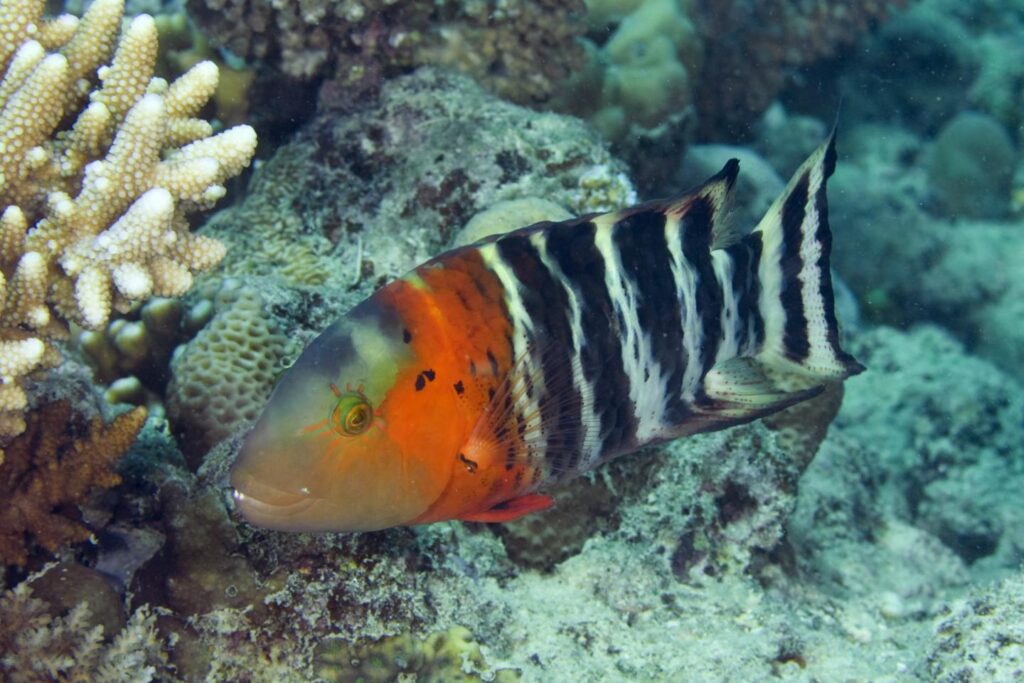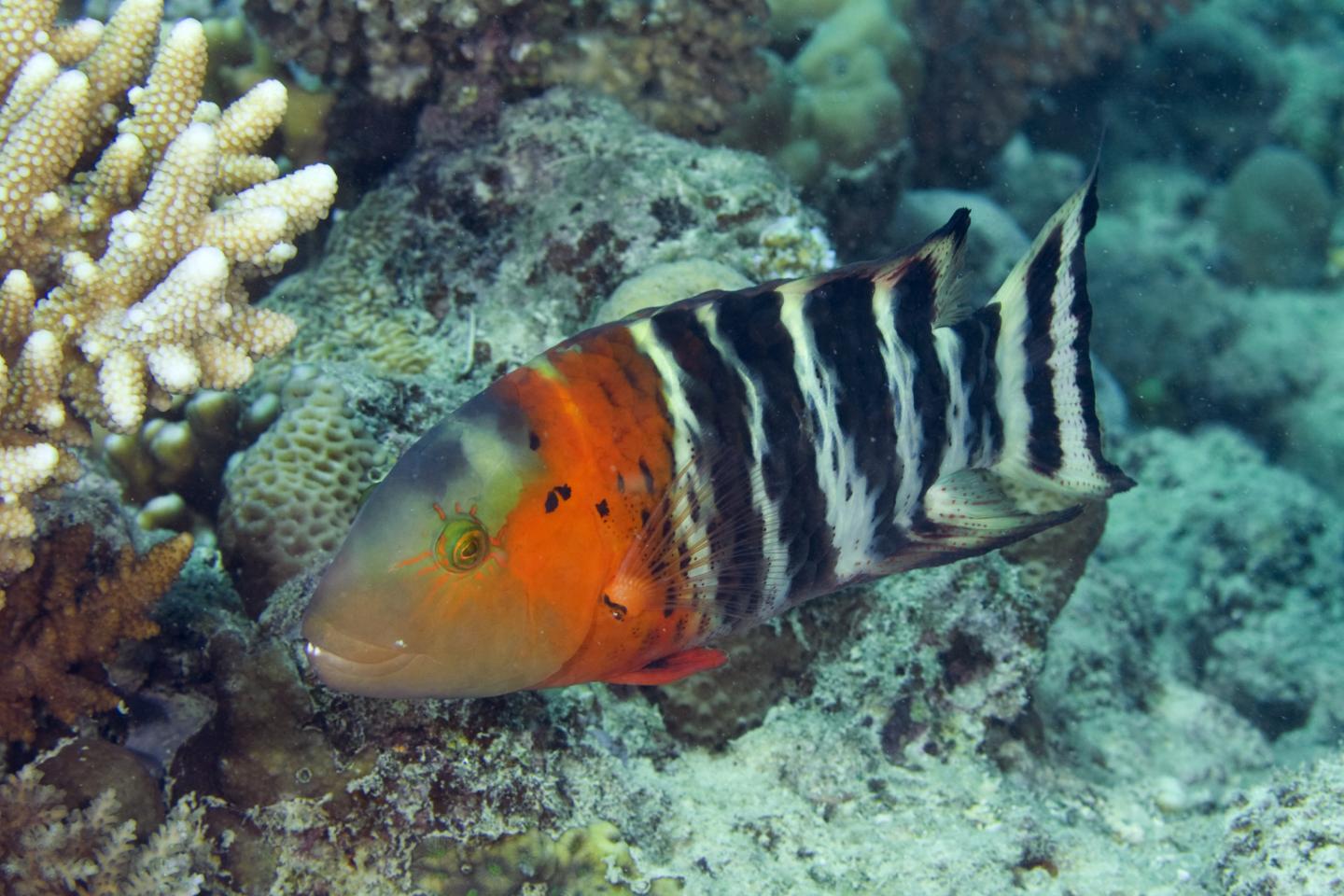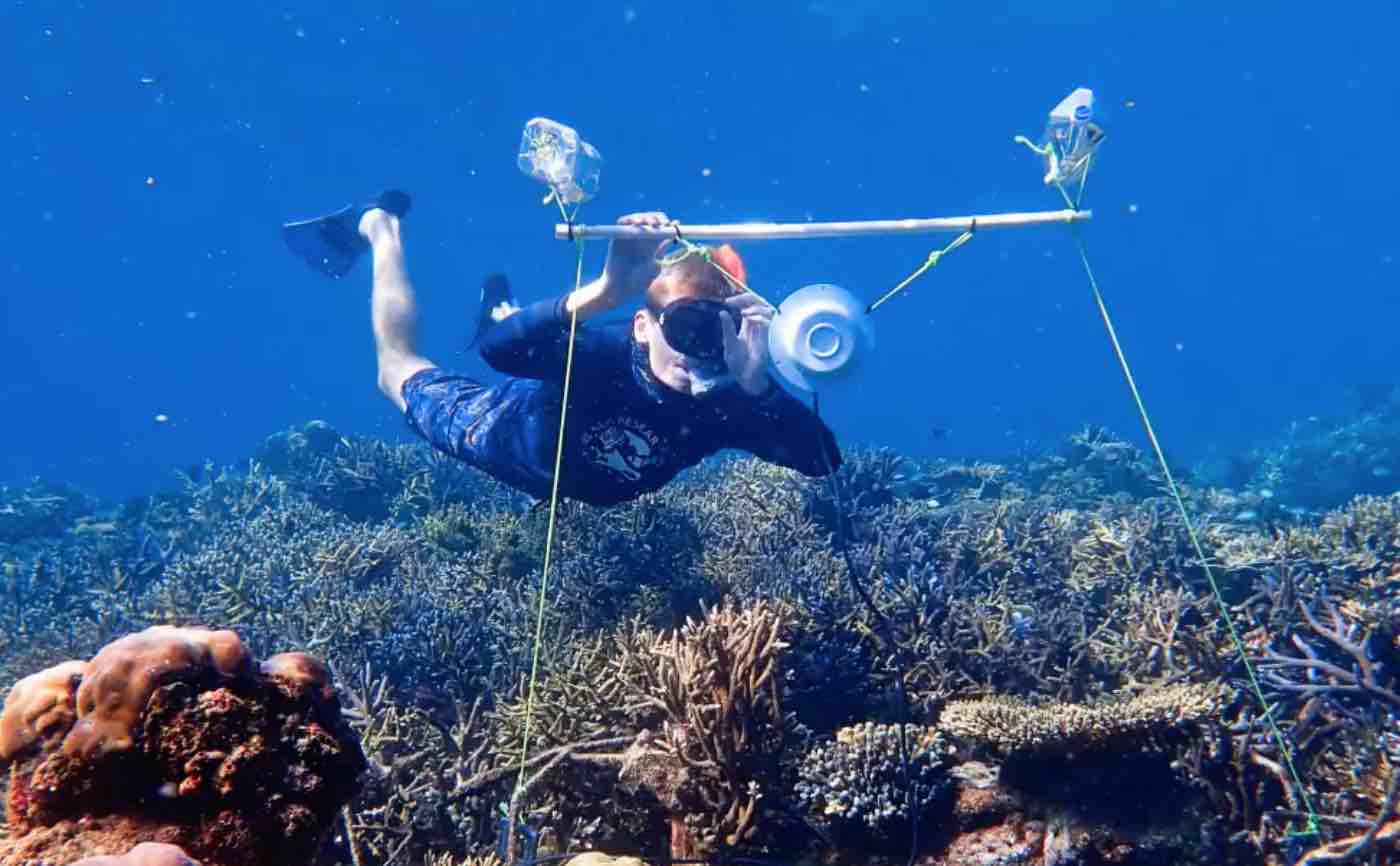
CREDIT
Photo credit: João Paulo Krajewski
Marine scientists are calling for a re-think of how marine protected areas (MPAs) are planned and coordinated, following a global assessment of the conservation of tropical corals and fishes.
Researchers from the Australian Research Council Centre of Excellence for Coral Reef Studies (Coral CoE), at James Cook University in Townsville, analysed the extent to which the evolutionary histories of corals and fishes are protected, rather than looking at individual species.
“Our interest was in evolutionary branches of the tree of life, rather than the traditional focus on rare, threatened or endemic species,” said Professor David Bellwood from the Coral CoE.
“In particular we were interested in the longer branches, which represent the greater proportion of evolutionary history.
“When we looked at tropical Marine Protected Areas from that perspective, we found that protection of corals and fishes falls significantly short of the minimum conservation target of protecting 10 per cent of their geographic ranges.
“Just one sixteenth of hard corals species are afforded that minimum level of protection, and for fishes – the wrasses – less than a quarter reach minimum protection levels.”
Professor Bellwood said that while it was still useful to focus on the conservation of rare, threatened and endemic species, planning protected areas around evolutionary history helped provide a deeper perspective.
“In effect, we are looking at protecting the reef equivalent of cultural heritage, the critically important history of living organisms,” he said.
“It is not just species that need protection but the genetic history that they contain. In a changing world this evolutionary diversity is likely to be increasingly important, as reefs respond to new challenges.
The researchers found that the shortfall in protection for corals was greatest in the Atlantic and the Eastern Pacific.
For fishes, the highest concentrations of poor protection are in the Western Indian Ocean and the Central Pacific.
“Even though our estimates are highly conservative, the inescapable conclusion is that most evolutionary branches of the tree of life on coral reefs are inadequately protected by the current system of Marine Protected Areas,” Professor Bellwood said.
Read more: Tough times for the tree of life on coral reefs
The Latest on: Marine protected areas
[google_news title=”” keyword=”marine protected areas” num_posts=”10″ blurb_length=”0″ show_thumb=”left”]
via Google News
The Latest on: Marine protected areas
- Protected Areason April 27, 2024 at 3:31 am
The Greek prime minister Kyriakos Mitsotakis has announced that bottom trawling will be outlawed in the country’s marine protected areas (MPAs), hailing the move a “historic moment”.
- Global Conservation Leaders Unite in Saudi Arabia's Hima Protected Areas Forum, Setting Bold Agenda for Sustainable Futureon April 26, 2024 at 1:49 am
The inaugural Hima Protected Areas Forum concluded in Riyadh on April 24th, marking a historic moment in the realm of conservation and sustainable development. Organized by the National Center for ...
- Nunavut government wants to open a protected area in the High Arctic to tourismon April 25, 2024 at 11:15 am
The Government of Nunavut is pushing the federal government to allow tourism, recreational and outfitting activities in the Tuvaijuittuq Marine Protected Area in the High Arctic.
- Has the U.S. really conserved a third of its waters? Here’s the math.on April 19, 2024 at 1:29 pm
The White House said a majority of that ocean expanse — 26 percent of U.S. waters — is officially designated as “marine protected areas,” where human activity is typically restricted to ...
- Greek minister says 2 major new marine parks will be created by the end of this yearon April 17, 2024 at 8:58 am
Greece's environment and energy minister says his country will be able to create two new major marine parks in the Ionian Sea and the Aegean Sea by the end of this year ...
- A bottom trawl ban in marine protected areas would be good for everyoneon April 17, 2024 at 2:32 am
The damage caused by bottom trawling should not be underestimated. Marine-protected areas across the world must be properly protected and free of rampant industrialisation, Hugo Tagholm and Nicolas ...
- Greece ‘First in Europe’ to Ban Bottom Trawling in All Marine Protected Areason April 16, 2024 at 11:21 pm
Greece will ban bottom trawling in all of its marine protected areas by 2030, Greek Prime Minister Kyriakos Mitsotakis announced on Tuesday ...
- Greece plans 2 marine protected areas as part of environmental protection programon April 16, 2024 at 8:43 am
Greece aims to create two large marine parks as part of an $830 million program to protect biodiversity and marine ecosystems ...
- Greece proposes 2 marine parks as part of $830M environmental protection programon April 16, 2024 at 5:35 am
Greece has proposed a plan to create two large marine parks as part of an $830 million program to protect marine ecosystems, drawing criticism from Turkey.
- Greece Plans 2 Marine Protected Areas. but Rival Turkey and Environmental Groups Aren't Impressedon April 15, 2024 at 11:38 pm
Greece Plans 2 Marine Protected Areas. but Rival Turkey and Environmental Groups Aren't Impressed ATHENS, Greece (AP) — Greece aims to create two large marine parks as part of a 780-million-euro ...
via Bing News











